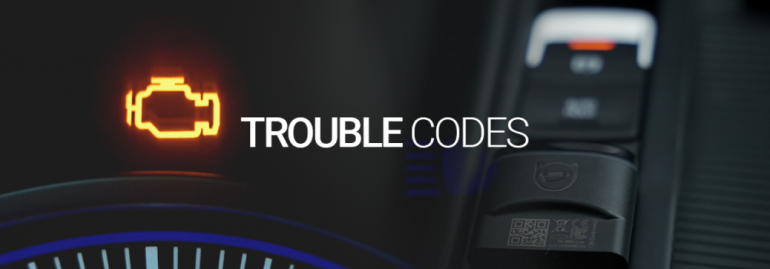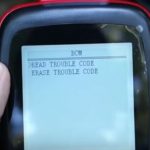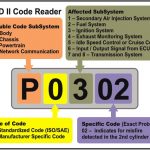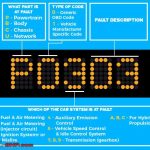There are several different kinds of engine fault codes. In this article, you will learn about P0175, P0430, and P0782. To help you determine which one is causing the problem, follow the directions below. If you do not understand any of these codes, please feel free to contact us. We will gladly answer any questions you may have. Please check out our other articles for more information. Once you have learned how to interpret these codes, you will be able to diagnose any problems that you may be experiencing with your vehicle.
P0175
The first clue that your car might be experiencing an engine fault code is P0175. If you notice rough idling, low power, stalling, or misfiring, then your vehicle may have a faulty oxygen sensor. Another common cause is a dirty or faulty mass airflow sensor. You can clean this sensor using WD-40 or an electronics cleaner. You should also check your spark plugs for soot buildup.
The third step is to check your vehicle’s oil level and to ensure that it is at an acceptable level. You should be careful when checking these codes. This is because these codes usually indicate a serious problem. Even though these codes do not affect drivability, they can lead to costly problems if ignored. For instance, if you continue to drive your vehicle while the P0175 code is present, it will use more gas and operate inefficiently. Moreover, your car will lose miles per gallon, which can be very costly. To avoid this, take it to a mechanic who is familiar with vehicle diagnostics and car maintenance.
In some cases, the ECM may be unable to detect an air/fuel mixture problem. If this happens, the ECM will attempt to compensate for the problem by varying the fuel ratio. If the fuel trim is set at its maximum, the problem is likely related to the intake manifold or fuel injector. However, it is important to remember that the information in this article is for educational purposes only and does not substitute the services of a professional mechanic.
The most common cause of this code is a fuel injector. Its malfunction causes too much fuel to enter the engine. The injection is not working properly due to fuel leaks, or the engine’s vacuum system may have a leak that lets oxygen out of the chambers. A damaged, dirty, or broken fuel injector can also lead to this code. There are several causes of the P0175 code, so be sure to get a mechanic to diagnose the problem quickly.
P0430
The P0430 engine fault code is most likely a signal that your car is experiencing an issue with the system on bank two. Unlike the P0420 code, which indicates a problem on bank one, the P0430 code indicates a problem in both banks. Fortunately, there are some easy ways to diagnose this problem. To start, you should check your car’s check engine light. If it doesn’t flash, the code may still be present. If this happens, you should purchase a professional OBD II scanner.
A P0430 engine fault code indicates a problem with the three-way catalytic converter (bank two) in your vehicle. While the P0430 code doesn’t indicate a major problem, it can lead to poor acceleration or lack of power. Regardless of the specific cause, it’s important to get the vehicle repaired as soon as possible. An OBD-II code reader is your best bet for diagnosing the cause of P0430.
A number of different problems can cause a P0430 code. In the most common case, the catalytic converter is the issue. Moreover, the catalytic converter is located on bank two of the engine block. If the catalytic converter isn’t functioning properly, it may cause the check engine light to illuminate. In such cases, you should seek help from a mechanic to check whether the catalytic converter needs to be replaced.
Another cause of P0430 engine fault codes is a malfunctioning catalytic converter. If this is the case, you’ll need to replace the catalytic converter as soon as possible. A dealership repair may cost up to $1,800, but aftermarket parts will only cost you $500 to $1,200. If you want to make sure the catalytic converter is faulty, you can also purchase an OBD II diagnostic scan tool to rule out other problems.
P0011
The symptoms of a P0011 engine fault code may include decreased fuel efficiency, reduced power, and difficult starting. If you’ve recently noticed one of these symptoms, you should contact your mechanic immediately. If you have no experience with auto repairs, you can try watching a video on troubleshooting your car’s diagnostic system. These videos may help you understand what’s causing your car to display this code and what to do about it.
One of the most common causes of a P0011 engine fault code is a dirty engine. Your car’s camshaft may be advancing, causing the engine to run harder than usual. It might also lead to a reduction in fuel mileage. Check your timing belt and camshaft position to determine whether they’re aligned properly. The camshaft sensor is responsible for sending information to the electronic control module, which is responsible for determining the timing of ignition and fuel injection.
A poor choice of oil can cause carbon buildup in your car’s VCT engine. This buildup results in a small ball-like substance. Before VVT engines were developed, this type of buildup was unheard of. The ball-like substance can block the solenoid filter, preventing it from operating properly. To troubleshoot a P0011 engine fault code, you’ll need to use a multi-meter to measure the resistance. This wiring diagram is available at All Data DIY.
If your vehicle displays this code, you should change your oil. A fresh oil change can solve seventy percent of P0011 DTCs. Changing the oil may also fix the cause of your P0011 engine fault code. The valve control solenoid may be open when the P0011 code is displayed. This condition can also result in damaged wiring in the valve control solenoid system. Another common cause is dirty oil, which can lead to the need to replace the engine.
If you don’t have the necessary experience to diagnose and repair your P0011 engine fault code, an inexpensive oil change will solve your problem. A simple oil change will cost anywhere from $30 to $50. You might want to consider hiring a mechanic to do the replacement for you, but be aware that this can be expensive, especially if you own a luxury vehicle. P0011 engine fault codes are dangerous because the malfunctioning component could seriously affect your vehicle’s performance.
P0782
The transmission in your vehicle may display a diagnostic trouble code of P0782 when it experiences a gear shift problem. In some vehicles, the powertrain control module (PCM) will delay shifts when the Transmission Fluid Temperature falls below 21 degC in order to allow the heater to warm up faster. The delay of the shift is often caused by a leaky 2-3 accumulator. This code will also appear if the transmission is not shifting into the next gear.
A number of causes of the P0782 code can lead to transmission problems, including a pushed-out shift solenoid or corroded connector pins. A mechanic will typically charge between $75 and 150 dollars for one hour of labor to repair a P0782 error code in your vehicle. The labor rate for these repairs varies, and it depends on the vehicle’s make and model. Most shops will charge $75-150 per hour to repair the transmission.
Error code P0782 is set in the vehicle when the transmission is not able to match gear ratios. This code may also be associated with a CHECK ENGINE warning light. Typically, the shift solenoids are located in the automatic transmission. Healthy transmission fluid should be bright red. A number of other causes of the P0782 code include corroded connectors and damaged or open wiring.
Another cause of P0782 engine fault codes is an electrical control circuit malfunction. A faulty solenoid could result in the vehicle experiencing two or three gear shift problems. Other possible causes of P0782 are a blockage in the transmission control relay or a PCM/TCM fault. The symptoms of P0782 code range from no symptoms to a failure to shift gears, decreased fuel efficiency, and a harsh shifting transmission.
The problem is more complicated than it seems. In the first place, the transmission should be functioning correctly. A low transmission operating pressure may also be a cause. In this case, you should take the vehicle to the dealership for repair. Afterwards, you can determine whether or not a transmission control module failure is the cause of the fault. If it does, the repair may be necessary, but if the fault is intermittent, you may be able to wait for the symptoms to get worse before you take the vehicle to the mechanic.






